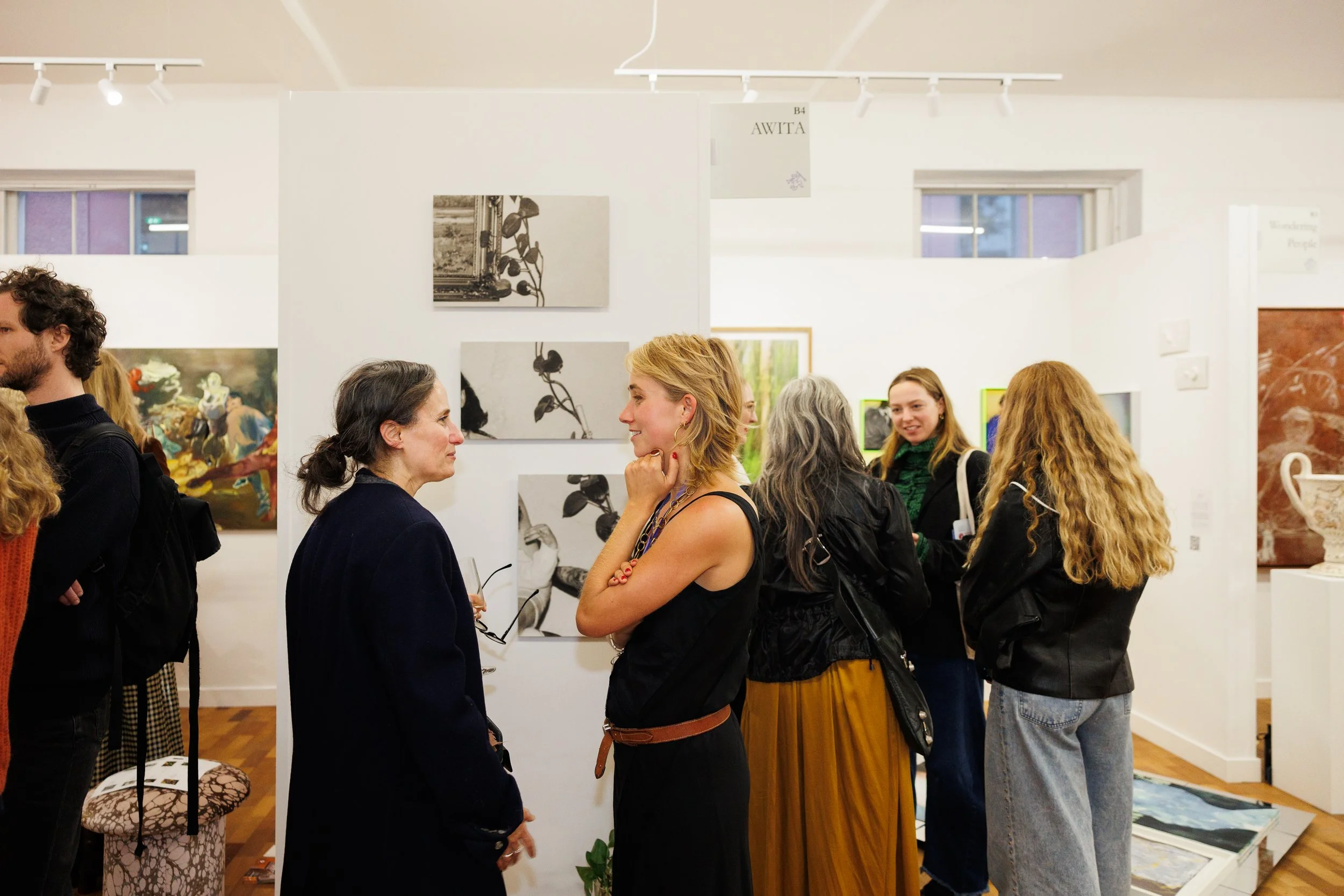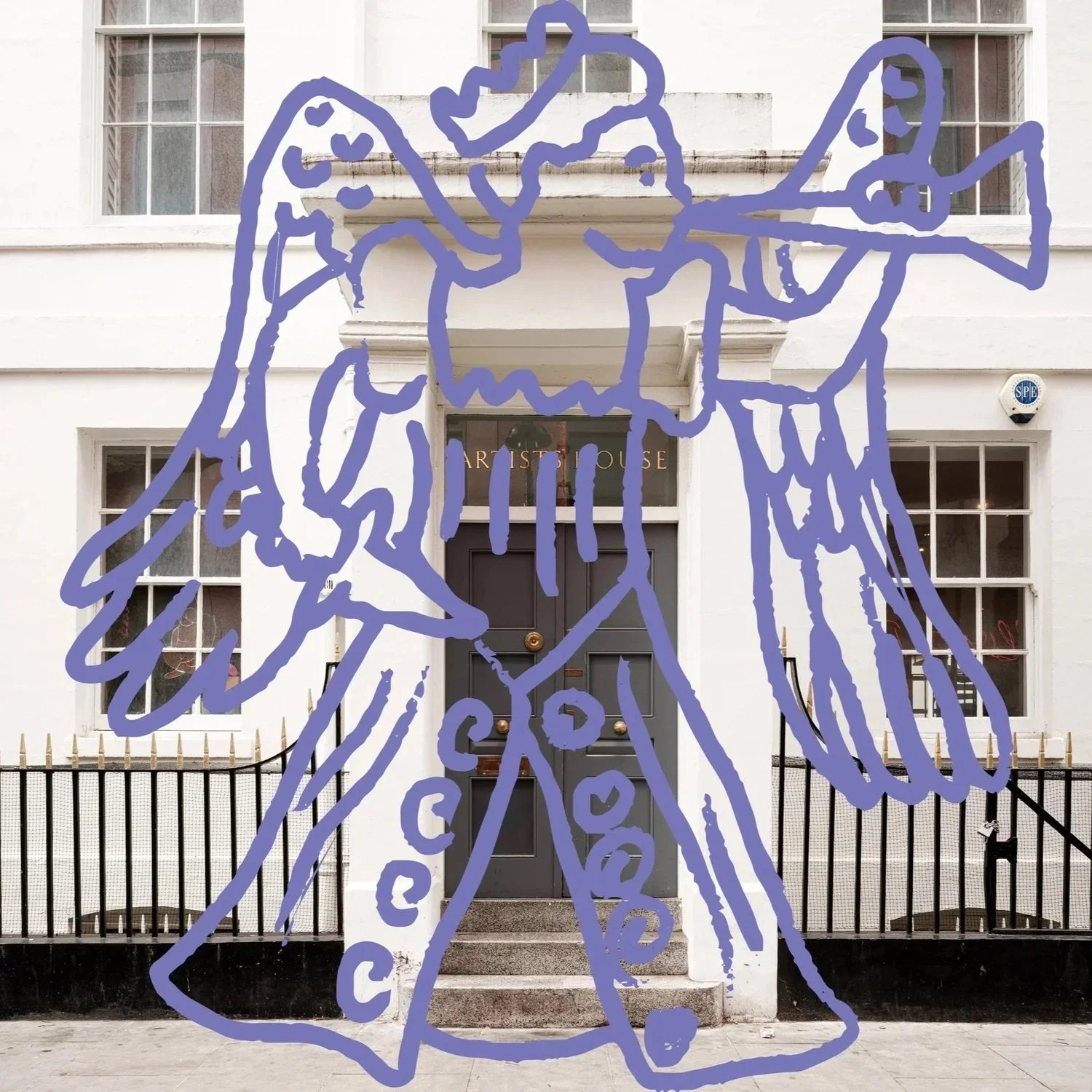AWITA at Echo Soho
Resonant Spaces: Curating Echoes
Frieze Week, 16–19 October 2025
Artist’s House, Soho
AWITA presented Resonant Spaces: Curating Echoes at the inaugural edition of Echo Soho, a new art fair founded by and for female-led galleries. Drawn from proposals by eleven AWITA members - curators, gallerists, and independent practitioners - the booth explores the myth of Echo and Narcissus through the metaphors of reverberation, repetition, reflection, and collective memory.
AWITA is proud to have shown work selected by members Francesca Weir (Victoria Miro), Kate MacGarry, Tracey Grace (GBS Fine Art), Bengu Gun, Freeny Yianni (Close Gallery), Marisa Bellani (Roman Road), Tina Sotiriadi (HS Projects), Sarah Le Quang Sang (SLQS Gallery), Clemmie Cooke (Cooke Latham Gallery), Jade Y. Turanli (Pi Artworks) and Rakeb Sile (Addis Fine Art). Together, their nominations were shaped into a single curatorial statement that foregrounded both senior and emerging voices.
At the centre of the booth was a raised mirrored plinth - a conceptual “pond” - which held six works addressing selfhood, portraiture, and identity. Visitors looked down into the reflective surface, recalling both Echo’s lingering voice and Narcissus’s fatal gaze. Works here included three pieces by Jyll Bradley, whose practice brings light and belonging into dialogue with queer identity; Cleo Stoutzker, whose layered portraits and landscapes explore diaspora and intergenerational memory; Sena Başöz, whose The Ivy weaves fragments of family photography with climbing ivy to reflect cycles of life, memory, and womanhood across generations; Luca Asta’s Gonads, an analogue print exploring the psychosocial construction of the body, confronts the politics of gender and corporeality through a stark, intimate lens; Emma Tod, whose work investigates the interplay of memory and objecthood, transforming everyday materials into poetic meditations on presence and absence, Damaris Athene’s glass painting series diffract// plays with light, reflection, and the movement of the viewer, challenging perception and depth; Paola Estrella’s Cenote Glitch references Yucatán cenotes as portals of transition, ancestral memory, and ecological cycles; Selome Muleta’s Untitled continues the artist’s exploration of selfhood and the thresholds between interior and exterior worlds, often expressed through the domestic space as a site of reflection and renewal; Polina Piëch’s analogue photography centres on exploring movement within nature’s elements - how air travels the earth - sparking a dialogue between the contrasts of slowness and motion.
Laura Gannon’s recent paintings on linen, made with metallic ink and subjected to folding, bending and wrinkling, reveal the material’s corporeality and raw directness. Fani Parali’s clay reliefs consider birds as embodied voices, carriers of song and myth. The practice of Jane Harris anchors this strand: Harris quietly crafted a meticulous, highly disciplined body of work focused on perception and subtlety. Her insistence on structure, limiting colour, motif, and technique, allowed rich variations and optical play. In this context, her paintings show how a single motif can become a site of infinite variation and sustained emotional charge. Together, the mirrored floor and surrounding works staged a dialogue between interior reflection and exterior resonance, between the persistence of self and the echoes that carry through space, time, and landscape.
Images: Courtesy of Echo Soho. Photographed by Amber Pollack.











